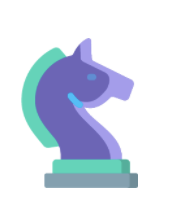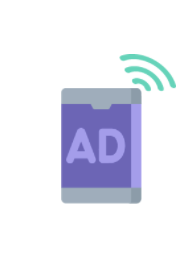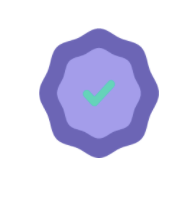Identifying potential customers is crucial for the success of every business. Whether you are a startup, a senior executive at a global firm, or planning to start a new business, it is important to identify which segments of the population to target to make your business grow.

Identifying the right potential customers is key to your business growth.
No two customers are the same. Every customer differs on the basis of their needs, characteristics, interests, and many other factors. Identifying potential customers allows marketers to address every group of customer-specific needs in a targeted manner.
In a nutshell, following a step-wise and structured approach to identify your market helps you reach out to the right audience and thus, effectively increases your marketing productivity.
Here are our 4 advanced tips to help you identify your potential customers:
- Segment Your Potential Customers
Segmenting your customers is the first step in identifying and understanding your potential customer base. Customer segmentation means segmenting your customers into groups on the basis of demographic, geographic, psychographic, and behavioristic traits.
Segmentation allows you to understand your customers at a deeper level. It also helps you identify what is important for your customers or if factors like location, price, customer service, and quality are important. Segmenting even allows you to rank these factors on the scales of high, medium, low, or not relevant.
Thus, segmentation offers an easy and effective way of organising and handling your relationship with your customers. This process further simplifies your personalisation and sales efforts to help boost your conversions and customer loyalty.
There are different ways to segment your customers. Let’s take a look at some common methods of identifying potential customers through segmentation:
Demographics
Through this method, potential customers are segmented by criteria such as:
- Age
- Gender
- Education
- Occupation
- Marital status
- Income level
- Family size
- Religion
This method enables you to choose those demographic traits of your target market that relates best to the interest, needs, and ability of the customer to purchase your product or service.
Geographic
Geographic segmentation groups your potential customers on the basis of their locations. This method helps you know the local customs, climate, and expectations of the customers in those locations.
You can segment customers based on:
- Country
- Region or states
- Climate
- Dietary preferences
- Rural or urban
Behavioural
This method of segmentation works by grouping customers based on their behavioural data and how they interact with your brand. Behavioural segmentation helps you understand the buying habits and patterns of your potential customers.
It helps you answer the following questions regarding your market:
- Number of times the customer buys from you
- Monthly, weekly, and quarterly timetable of purchase
- Amount of product or service purchased
- How long it takes the buyers to make a purchase
- Reason or occasion of the purchase
Once you have an idea of what you are looking for, you can segment the customers accordingly and create a customer profile based on your findings.
A customer profile assists you in formulating proper marketing strategies to help you succeed in your target market. Buyers’ profiles or personas are immensely helpful, especially when you want to target strategically important segments of your market.
Personas are built with a prime focus on most differentiating factors between the target market groups. Personas give you a generic representation of your potential audience and hence, are strategically important for marketers.
- Research Competitors
Competitor analysis not just helps you understand your customers better, but also provides you with ways to enhance the customer experience for long-term benefits.
Comprehensive research about your competitors will excavate the answers to the following pertinent questions:
- What segments are my competitors covering or ignoring?
- How much are the customers willing to pay to your competitors?
- What’s the market positioning of your competitors?
- What are customers discussing on social media? Which channels are the customers using the most?
- What weaknesses or strengths can you identify by customer reviews?
Identifying competitors’ weaknesses assist you in capitalising on new opportunities. Going through what your competitors are doing and what they have been successful with gives you insightful data points to shape your marketing plan. With this detailed research, you can rest assured that you are equipped to survive even in a highly competitive industry.
- Shape a Healthy Brand Marketing Strategy
A healthy marketing strategy lays the foundation of all the right actions you need to effectively promote your brand or service and monitor the results of such actions. An effective marketing strategy comprises a set of elements to take people on a journey from knowing your product to making the final purchase.
One of the main reasons to segregate customer segments into targeted groups is to create a custom marketing plan for each group. With the buyers’ persona and other data at your hand, it becomes easier to identify and execute strategies to grow your brand awareness and equity.
Here’s how marketing targeting helps you reach your potential customers:
- Produce more valuable and targeted content by focusing on the needs and interests of your audience group.
- Make impactful content by using the language and messaging that resonates best with your target audience.
- Increase your audience base by optimising your content with the best keywords your customers search for.
- Build brand awareness and loyalty with emails, display ads, and influencers.
- Identify New Consumer Demands and Shift in Behaviors

Consumer behaviours change, especially in times like these. COVID-19 outbreak has changed customer attitudes, purchasing habits, and priorities. Additionally, the ever-changing landscape of consumer buying behaviour is also influenced by factors like sustainability and health perspective.
The consumer trend of 2020 suggests that consumers are adopting new and lasting habits with a focus on health, sustainability, and locally sourced products.
It is crucial for companies to match pace with these changes by leveraging deep insights. During these phases of change, behavioural science guides us on how to identify new beliefs, habits, and peak moments.
Need Help Identifying Your Potential Customers?
Knowing your potential customers can be a tough process for any company. It takes a lot of effort to segment your customers, scrutinize their activity on social media, create targeted ads and surveys, and a lot more.
Identifying potential customers is the backbone of responding to and addressing individual customers’ needs at the right time, with the right content, and through the right channel. Hence, companies must not leave any stone unturned to maintain and nourish their customer access and to match up to the growing pace of customer expectations.
To learn more about targeting your ideal customer, contact the market research experts at Bolt Insight!












